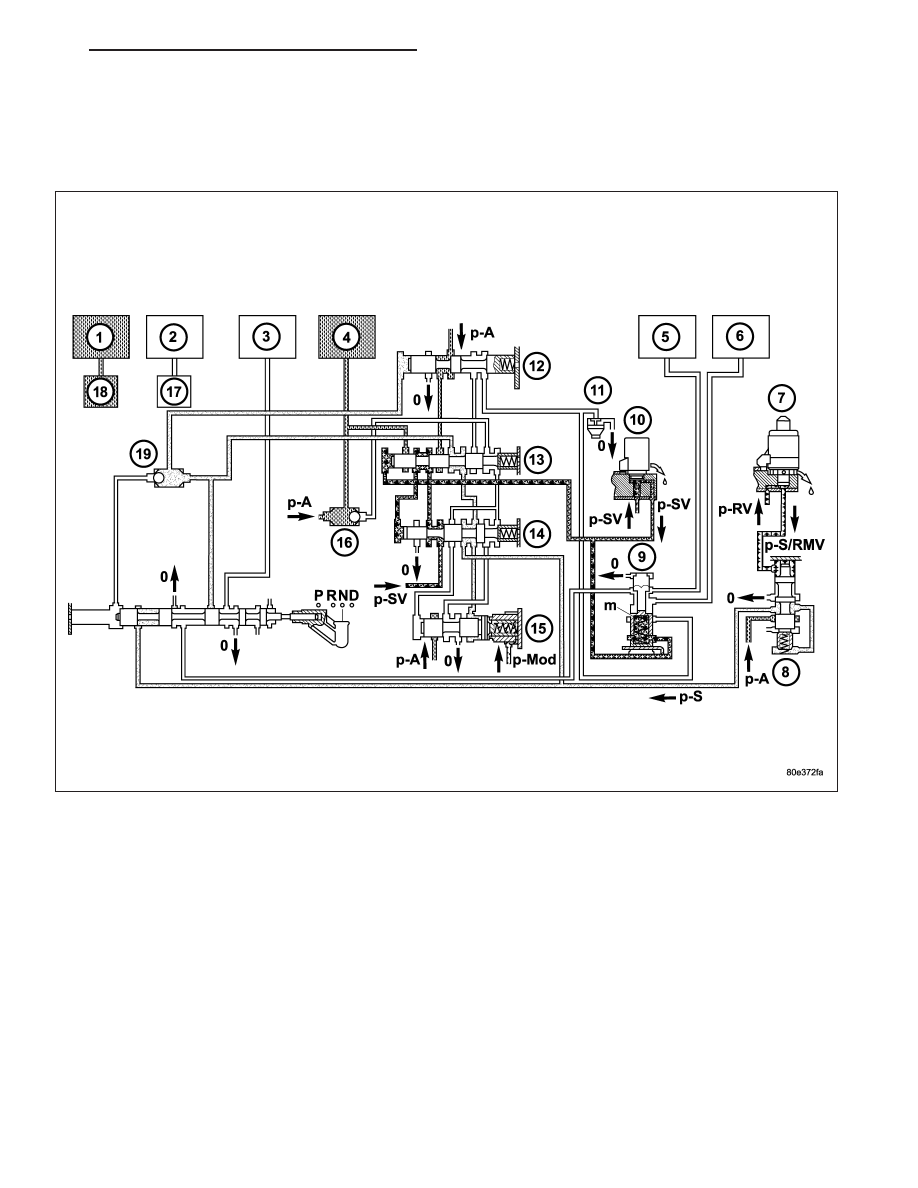Chrysler Crossfire. Manual - part 766

Gear Shift N to D (1st gear) - Engine Started
With the engine started and the gearshift lever in the NEUTRAL or PARK positions, holding clutch B1 (1) and driving
clutch K3 (4) are applied and the various valves in the 1-2/4-5 shift group are positioned to apply pressure to the
multi-disc holding clutch B2.
ZH
AUTOMATIC - NAG1 SERVICE INFORMATION
21 - 213